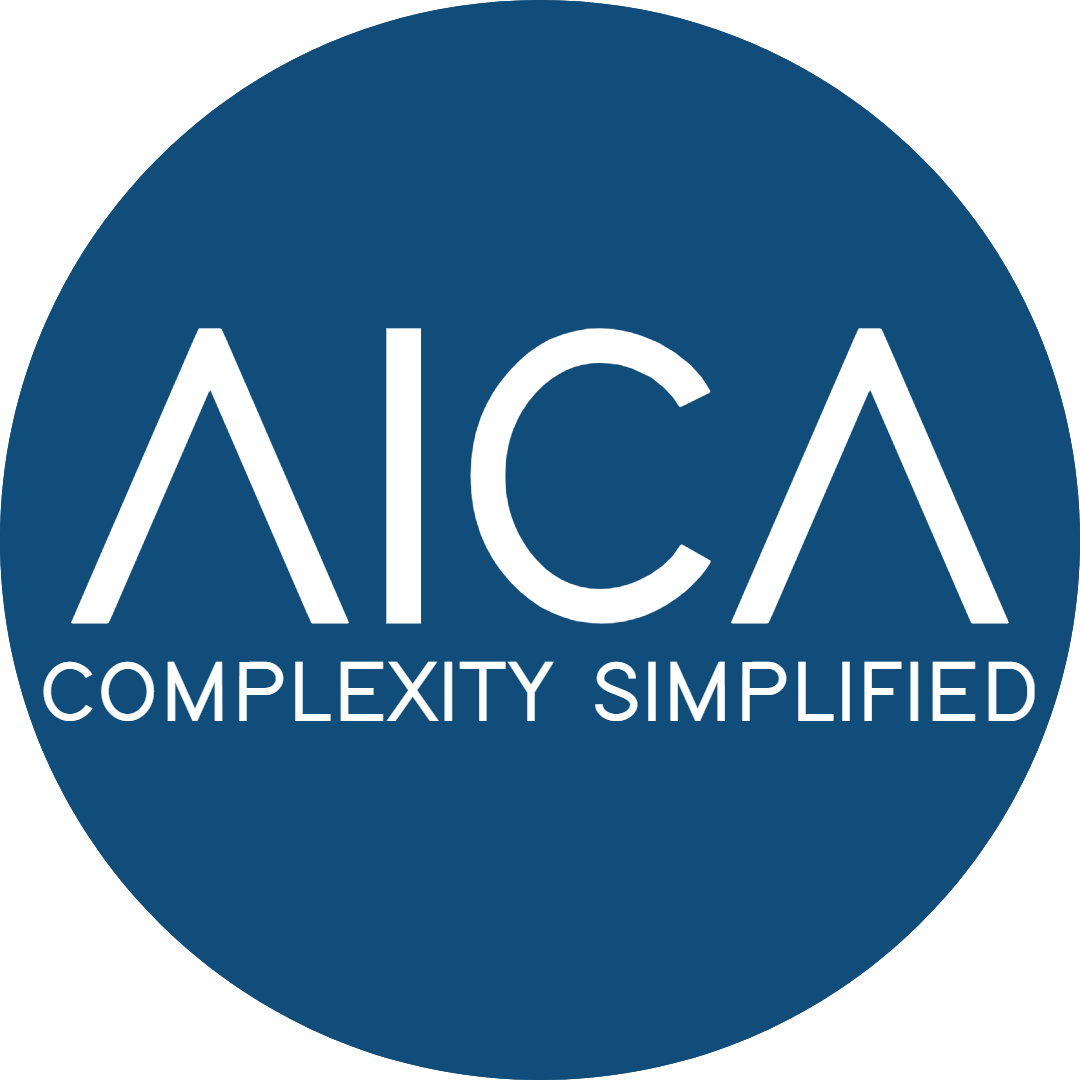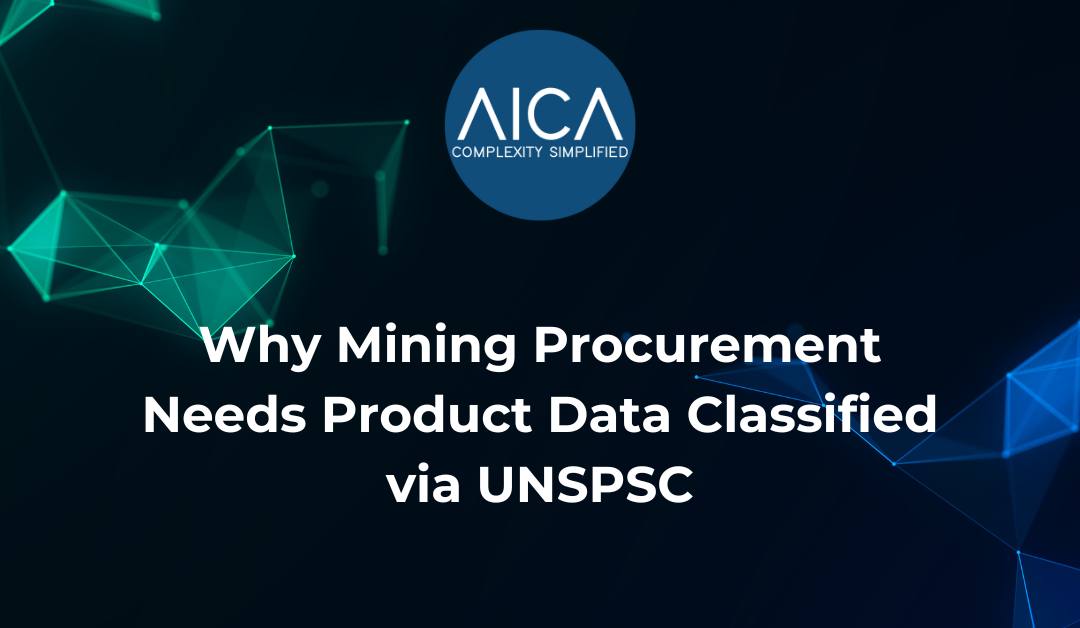Procurement plays a critical role in mining operations, ensuring that essential equipment, spare parts, and maintenance supplies are available when needed. However, managing procurement efficiently requires clean, structured, and classified product data. Without proper classification, procurement teams struggle with inaccurate purchasing decisions, duplicate orders, and increased costs.
One of the most effective ways to standardize procurement data is by using the United Nations Standard Products and Services Code (UNSPSC), a globally recognised classification system that structures product and service data into clear, standardised categories. This article explores why mining procurement needs UNSPSC-classified product data, the challenges of unstructured data, and how automated classification solutions like AICA can optimise mining procurement.
Challenges in Mining Procurement Without Proper Classification
1. Fragmented and Inconsistent Data
Mining operations source materials from multiple suppliers, often leading to inconsistent naming conventions and descriptions for the same products. For example, a drill bit may be listed as “Rock Drill Bit” by one supplier and “Rotary Drill Component” by another. Without a standardized classification system, procurement teams must manually sort through these variations, leading to delays and errors in purchasing decisions.
2. Duplicate and Redundant Purchases
Lack of classification results in duplicate product records in ERP and procurement systems. This means multiple teams may unknowingly purchase the same product from different suppliers, increasing costs and leading to unnecessary stockpiling.
3. Inefficient Supplier Management
Without a structured classification system, consolidating supplier data and analyzing spend becomes a challenge. Procurement teams struggle to determine which suppliers provide the best value, leading to missed cost-saving opportunities such as bulk purchasing or supplier rationalisation.
4. Compliance and Regulatory Risks
The mining industry is heavily regulated, requiring companies to track the sourcing, usage, and disposal of materials. Without accurate classification, ensuring compliance with safety, environmental, and procurement regulations becomes difficult, increasing the risk of penalties and operational disruptions.
The Role of UNSPSC in Mining Procurement
The UNSPSC classification system provides a hierarchical structure that assigns standardized codes to products and services, making it easier for procurement teams to manage, analyse, and streamline purchasing processes. Here’s how UNSPSC benefits mining procurement:
1. Standardisation Across Suppliers
UNSPSC ensures a common language for categorising products and services, allowing procurement teams to quickly compare and consolidate supplier offerings. This eliminates inconsistencies in product naming and descriptions.
2. Improved Spend Visibility
Classified product data helps procurement teams track spending trends, identify inefficiencies, and optimise purchasing decisions. With clear category-level insights, mining companies can negotiate better supplier contracts and identify areas for cost savings.
3. Better Inventory Control
Proper classification improves inventory visibility by ensuring that critical MRO (Maintenance, Repair, and Operations) supplies are categorised correctly. This prevents overstocking and stockouts, ensuring that the right materials are available when needed.
4. Enhanced Reporting & Compliance
By structuring procurement data into standardised categories, UNSPSC makes compliance reporting easier. This is particularly important for tracking hazardous materials, sustainability initiatives, and financial audits.
How UNSPSC Benefits Mining Procurement Operations
1. Cost Reduction
UNSPSC classification allows procurement teams to identify redundant purchases, optimize bulk purchasing, and reduce supplier fragmentation, leading to significant cost savings.
2. Operational Efficiency
Mining companies deal with high-volume procurement transactions. By automating classification through UNSPSC, procurement cycles become faster, reducing delays in material sourcing and improving supply chain efficiency.
3. Supply Chain Optimisation
When product data is properly classified, procurement systems can automate supplier comparisons, flag pricing discrepancies, and streamline order approvals, reducing procurement workload.
4. Risk Management
Mining companies operate in environments where equipment failure can lead to costly downtime. UNSPSC classification ensures that critical spare parts are accurately categorised and easily retrievable, reducing procurement errors that could cause delays in maintenance.
How AICA Automates UNSPSC Classification for Mining Companies
At AICA, we eliminate the inefficiencies of manual product classification by offering an AI-powered UNSPSC classification tool that seamlessly integrates with ERP, EAM and MDM systems via API. Our solution automatically detects, classifies, and corrects product data as it enters your system, ensuring high-quality data.
Key Features of AICA’s UNSPSC Classification Solution
- AI-Powered Classification: Automates product classification with high accuracy, reducing the time spent on manual categorisation.
- Error Detection & Data Cleansing: Identifies duplicates, inconsistencies, and incorrect classifications, ensuring clean and structured procurement data.
- Seamless ERP & API Integration: Directly connects to ERP, MDM, and procurement platforms, enabling real-time classification and data validation.
- Scalability: Can classify thousands to millions of product records, making it ideal for large-scale mining operations.
Conclusion
For mining companies, product data classification is not just a procurement best practice—it’s a necessity for cost control, operational efficiency, and compliance. UNSPSC provides a structured approach to organising procurement data, reducing redundancies, and improving supply chain management.
Ready to transform your mining procurement processes? Contact AICA today to learn how our AI-driven UNSPSC classification can streamline your operations and reduce costs.
Copyright Reserved © AICA Data International Ltd 2025

